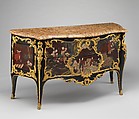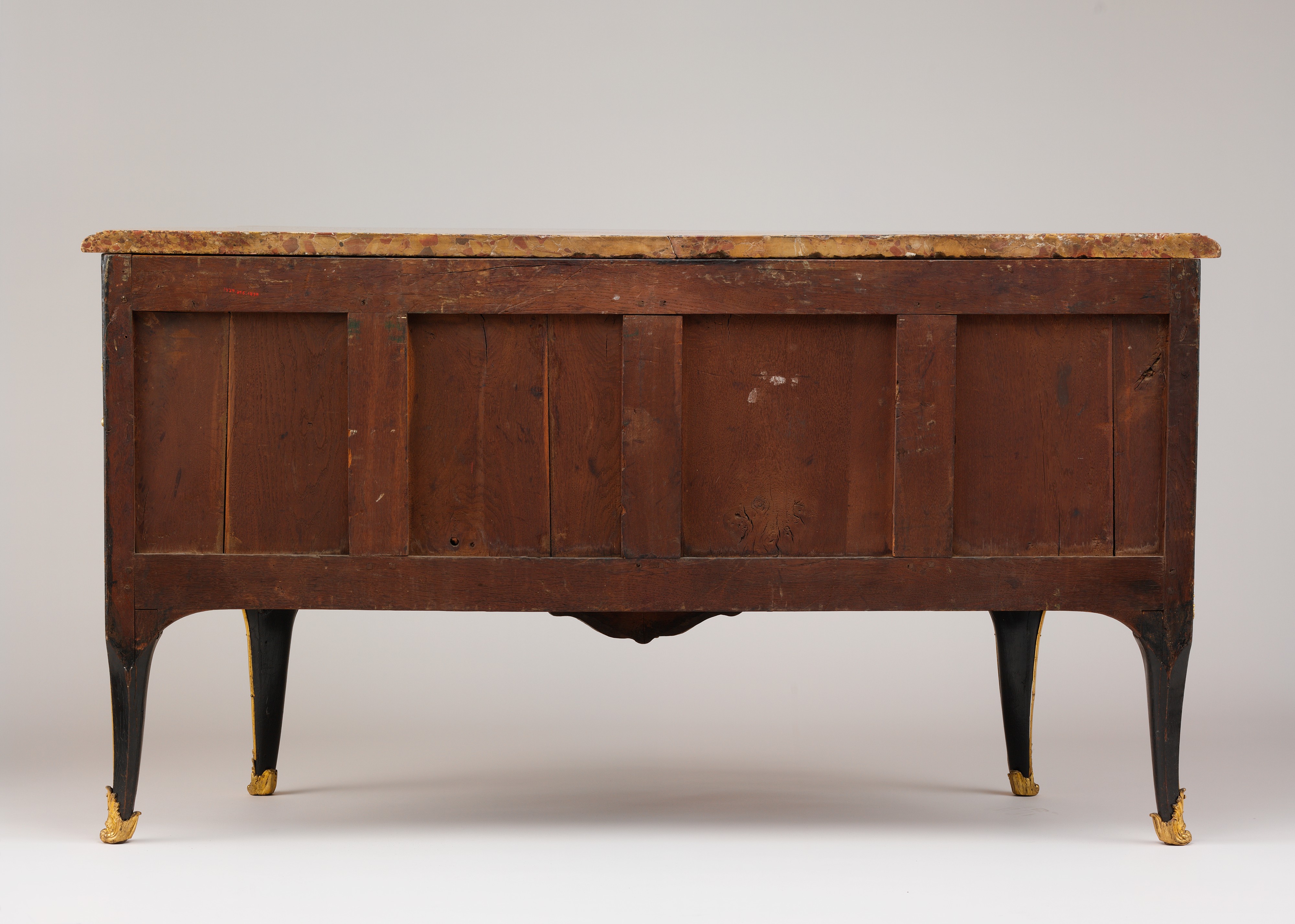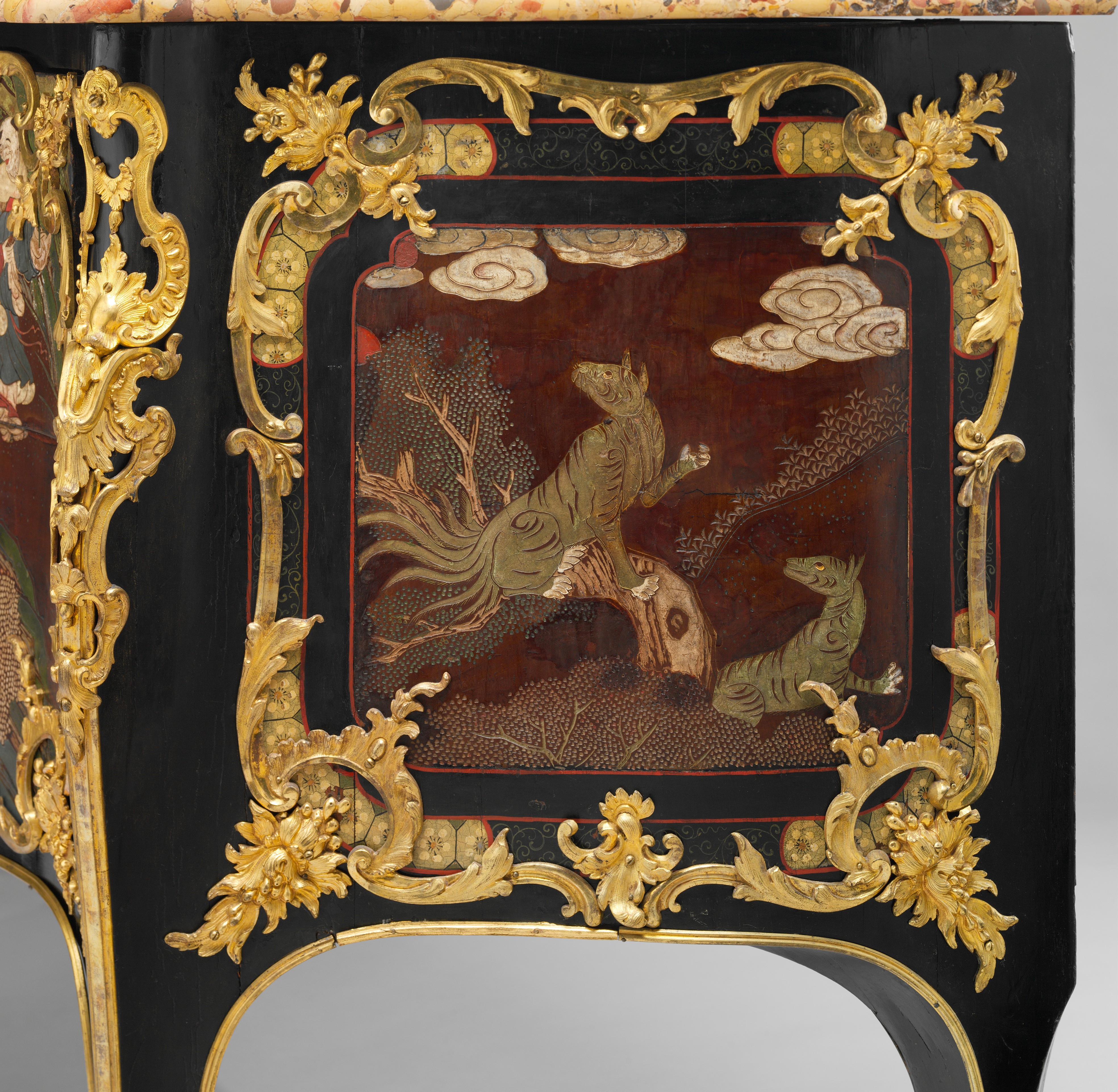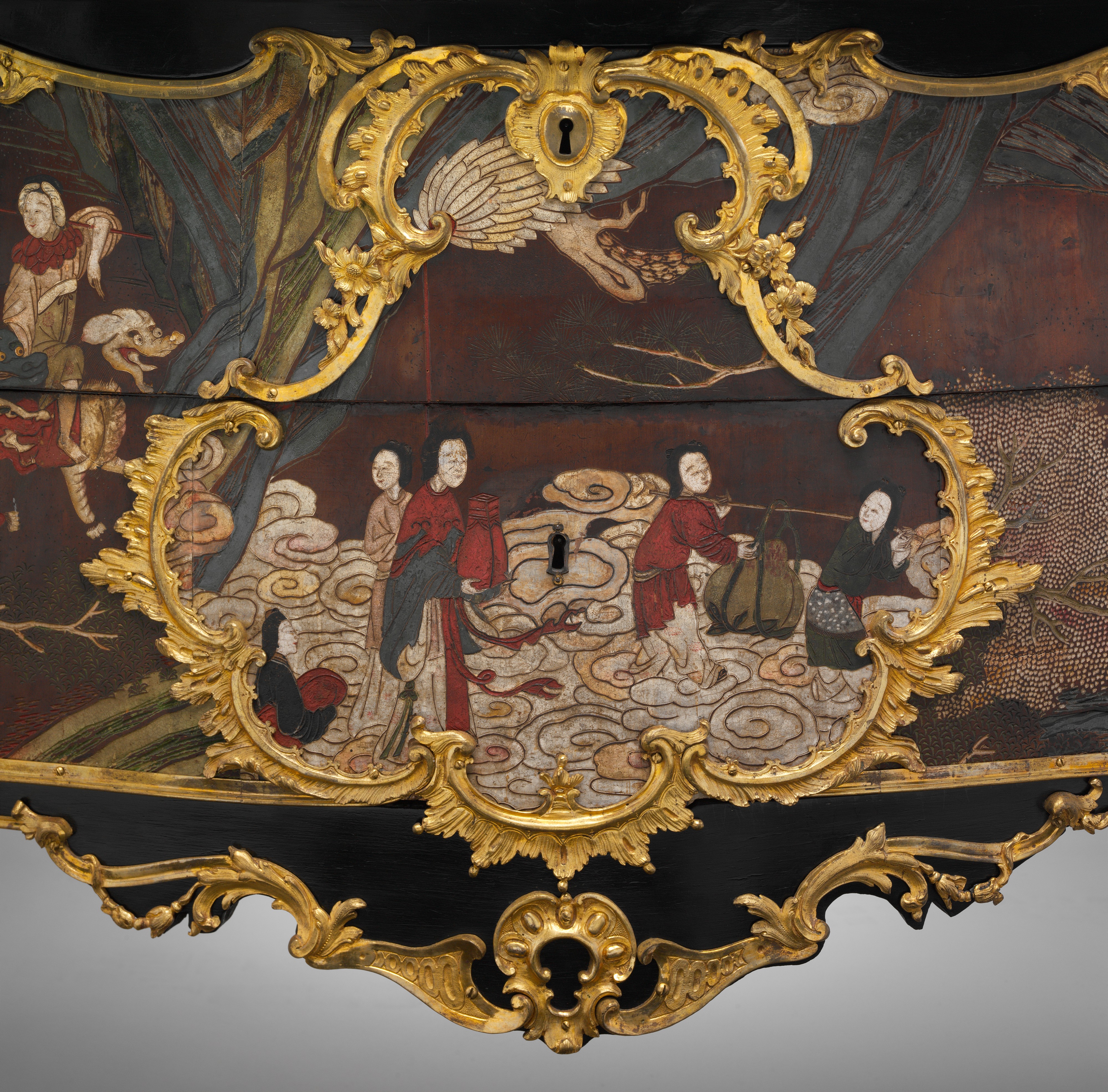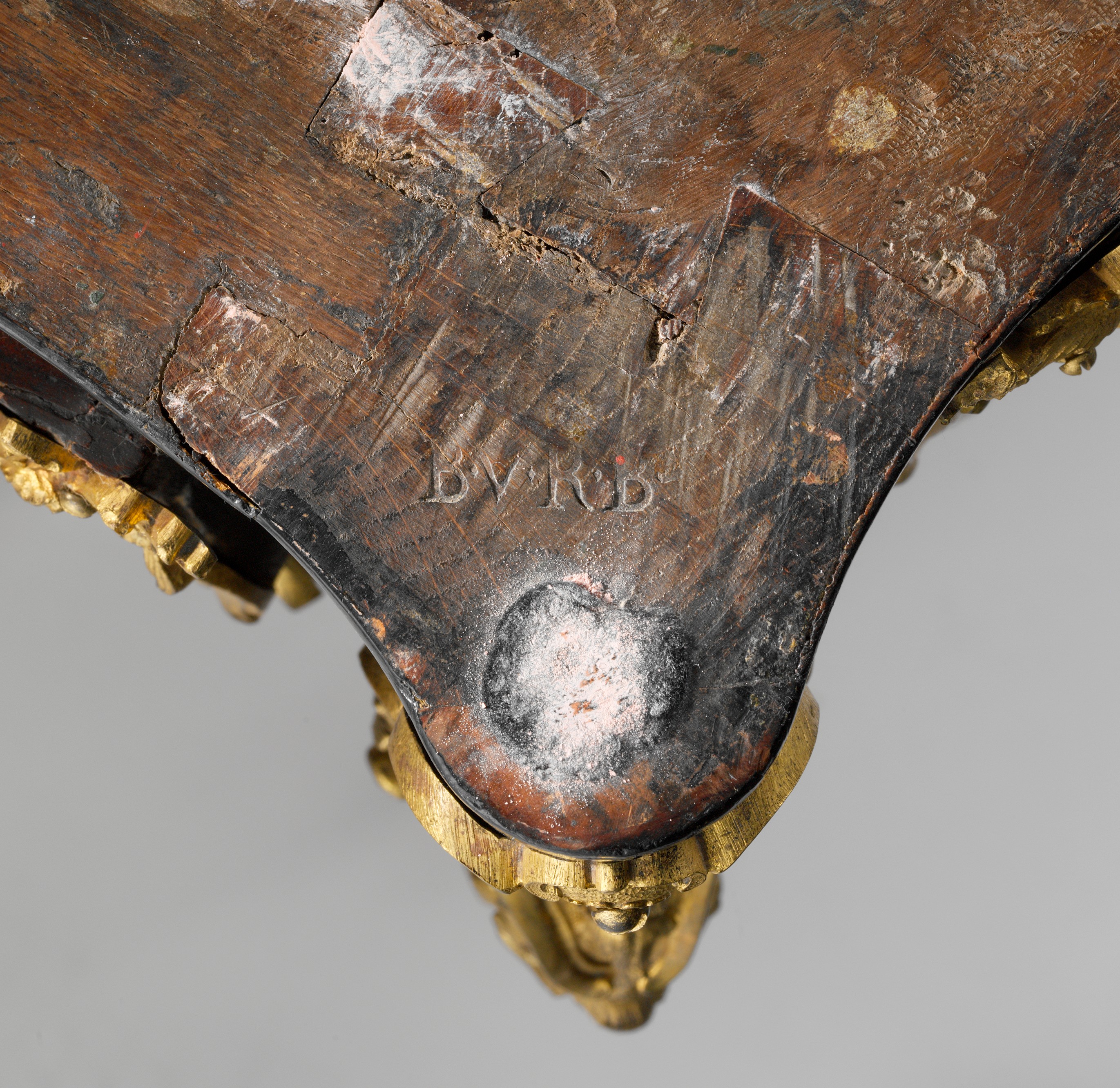Commode
This Commode or chest of drawers is stamped four times with the initials BVRB, indicating that it was the work of the cabinetmaker Bernard van Risenburgh ll who is particularly known for his exquisite pieces of furniture veneered with Asian lacquer. In most cases, the cabinetmaker used Japanese lacquer: here, however, the lacquer is Chinese, most likely derived from a large multi-leaf folding screen shipped to Europe via the Coromandel coast of southeast India.
Carefully selecting pieces with an interesting pictorial decoration to use as veneer for both the drawers and the sides, the cabinetmaker would have been limited by the size of the lacquer. The fact that the screen’s panels are tall and narrow would explain why separate and unrelated figural groups are used on the commode’s front. The square side panels show fantastic animals in a landscape setting and were likely not large enough to cover the entire area, necessitating a painted frame.
The elegant scrolling mounts play an important role: their curving outlines define the shape of the drawers and apron while the central cartouche of exquisite rocaille motifs visually divides the façade into three parts. It seems very likely that Van Risenburgh had these mounts on hand or that he owned the bronze models for them as identical mounts are found on other commodes made by him.
Commodes were introduced in the early eighteenth century in France and quickly became one of the principal pieces of case furniture in the stylish French interior. The fact that the drawers of this commode have no handles and thus can be opened, somewhat impractically, only by pulling on the key, probably indicates that such a fashionable object as this would be considered primarily as a display piece rather than used for actual storage.
Due to rights restrictions, this image cannot be enlarged, viewed at full screen, or downloaded.
This artwork is meant to be viewed from right to left. Scroll left to view more.
